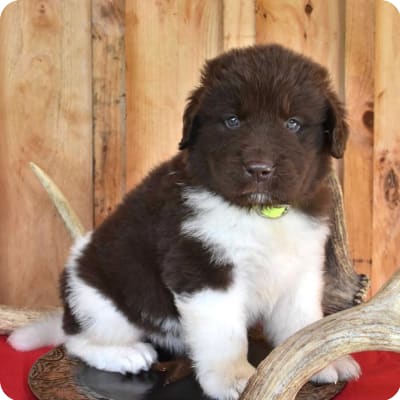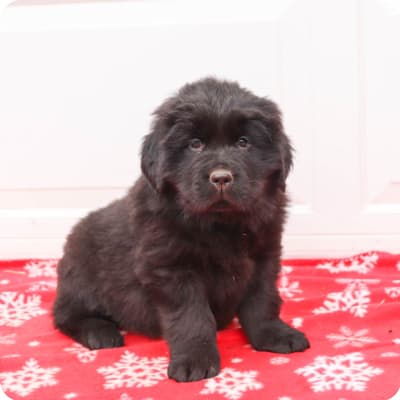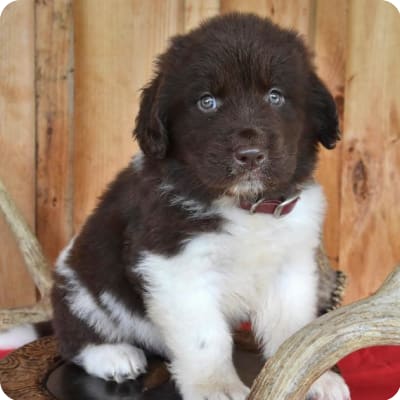Newfoundland Puppies

A devoted, sweet, and gentle giant
These working dogs are incredible breeds that are well known for their fine swimming abilities as well as their strength. They have very loyal natures and excel at water rescue and support, due to their webbed paws, muscular bodies, and double coats.
Newfoundland At a Glance




Newfoundland At a Glance
- Size: 25"-28", 110-155 lbs.
- Lifespan: 9-11 years
- Energy Level: medium
- Coat: Dense, coarse, and slightly oily
- Shedding: heavy
- Hypoallergenic: No
- Dog Group: Working
- Common Nicknames: Newfie
Newfoundland Breed Guide
Learn More About Newfoundlands


